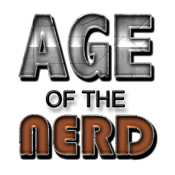Most established D&D 5th Edition players are familiar with the Lost Mines of Phandelver adventure. Presented in the Beginner Box, it’s designed to acclimate new players to the full range of activities present in 5e. Unfortunately, it has a habit of making people sick of it, because it’s the natural first place to turn when you’re starting a new group with new players. If you’re an experienced player and find yourself with inconsistent groups, you’ll likely have made
your way to the town of Phandalin over and over again.
Phandelver and Below: The Shattered Obelisk presents a new and updated version of the classic adventure, hopefully freeing players from taking the same tired paths over and over again. But beyond that, it expands the adventure, creating a second story arc in which the players will venture into the Underdark to face illithids trying to use a Netherese artifact to transform the town into mind flayers, taking the level 1-4 adventure all the way to level 12. Does this revitalize a tired old adventure and expand it? Well, let’s find out.
Phandelver The Second
Delving into the initial adventure, we find… well, quite a similar approach to the first Phandelver. Players are confronted with a goblin ambush and the option of facing the goblins in their hideout. They eventually end up in town, and encounter the Redbrand criminal gang, led by Glasstaff and controlled from behind the scenes by a mysterious figure called the Spider. Who turns out to be a drow. Who’s searching for the Forge of Spells. I could go on, but I’m not going to.
For those of you familiar with the Lost Mines of Phandelver, you should already see the problem; for the rest of you, this is just a line-by-line rehash of the original Lost Mines of Phandelver. Glancing back and forth between my copy of the original and the new one, I only note one change: the Black Spider has been renamed simply the Spider, presumably because the year is 2023 and associating villains with the color black is simply unforgivable.
And the review could really stop here, because the problem becomes clear: Lost Mines of Phandelver is the most overplayed module in the 5e kit, and in order for a DM to do anything but use this campaign for spare parts, they are going to have to ask your players to do it again. Exactly the same as they have done it before. Every NPC in the same place. Every plot twist the same. Every turn of the corridor identical to the one your most experienced players might have had to do half a dozen times. The boundless realm of wonder and mystery that D&D offers reduced to the mindless weekly trip back into a months-old raid dungeon of an MMO.
Ok, but How’s the Rest of the Book?
The rest of the adventure is quite reasonable. The original Phandelver starts out with rather mundane challenges and provides a slight “darker forces working behind the scenes” element by the end, and Shattered Obelisk expands on that fantastically, as the players will venture deeper and deeper beneath the earth and their foes will gradually become more otherworldly and disturbing. The players will venture into the Underdark and finally into other planes of reality. The world will shift around them as their foes’ plan comes to fruition. It’s fun and thematic, and on its own it seems like an interesting campaign to run, if not one that immediately sends me into a flurry of excitement.
It is worth noting, however, that while the original Phandelver had reasonable space for players who weren’t focused on combat, as you delve further and further into the Shattered Obelisk you’ll generally have a heavy focus on dungeon crawling and combat. A character with social skills will not find them wasted entirely, not every foe is immediately ready to strike at the drop of a hat. But more intrigue-focused characters that might have been fine in the original Phandelver section will see their capabilities wasted. This makes it a little difficult to recommend as a first campaign, simply because new players might not recognize that not every character build is well-suited for dungeon crawling. Ultimately, however, the second part of the adventure must necessarily come after the first, and
the first has a real problem.
But Surely the DM Can Fix it?
Of course, this is something that can be fixed. A DM can rework the first part of Phandelver to be new and different and still cleanly transition into the new second part of the book. But the question isn’t whether they could, it’s whether they should: generally speaking, Wizards’ premade campaign books are for DMs who don’t want to have to build their own world, but simply want to work with an existing well-defined setting. If a DM is forced to do that much revision, the Shattered Obelisk has to stand out against just continuing to improvise and creating an entire homebrew campaign, or simply buying another book that doesn’t require rewrites to prevent your players from groaning in unison as you say the word Phandelver. And this is essentially true to form for Wizards and 5e, a system that is full of ambiguous wording and missing mechanics, forcing DMs to improvise everything from interactions to entire systems of rules. Rather than recognizing potential issues and addressing them ahead of time, Wizards will time and time again just expect DMs to put in the work to cover for their mistakes.
The D&D component of Wizards has been on its back foot for some time. The new edition- or rather “new evolution beyond editions” of One D&D has presented very few changes or fixes to fundamental issues with the game, leading many to see it as a shallow cash grab that pushes players to buy updated books or move to D&D Beyond where presumably the continuous stream of errata will be kept up to date. Wizards faced tremendous community backlash over their attempt to take a cut of content creation with their OGL changes, finally giving up in the face of unified opposition. The last few content releases have been small microtransaction-level mini-books containing a handful of character options and little in the way of actual systems. This would have been an excellent time to release a slam dunk of an adventure book, showing that Wizards can still produce fantastic quality. Instead, we get a new adventure that hangs off the back of not only an existing adventure but the most overplayed existing adventure, with the obvious question of “but why Phandelver again?” hanging over the book from the moment you see the title, and no great answer from Wizards. This does not inspire confidence.
How Could It Have Been Fixed?
None of this was an insurmountable problem. Creating a reimagined Phandelver with nods to the original would have solved all these problems instantly. Run it ten years after the original Phandelver, with some old faces and locations but some new. How has the balance of power in the area shifted after the last group of adventurers came through? The events of Lost Mines of Phandelver could have even led to the new conflict we see: with the goblin tribes scattered and broken from the work of adventurers, they may have been incentivized to turn to other sources
of power, neatly setting the stage for our adventure. Doing this would turn the weaknesses of original Phandelver into strengths: those tired veteran players who had to enter the mines so many times that they know every twist and turn, can appreciate the subtle references thrown in from the old adventure.
The simpler approach would have simply been to write a new adventure that wasn’t Phandelver. The secondary plot is great, and there’s no reason you couldn’t have a similar arc to Phandelver, of a regular town suffering from troubles. The issue is that it is line-by-line the same as the original Phandelver, and you could probably even have broad strokes of the same basic concepts while still presenting new places to explore and people to interact with.
This leads to the natural question of why Wizards didn’t choose either of these options. I have two theories.
The first is nostalgia: Phandelver was chosen because it was the introduction to 5e, and as 5e gives way to 5.5e or whatever One D&D will eventually be called, they wanted to give it a sendoff. This conclusion would speak to Wizards being out of touch: it’s likely that when their employees play D&D they do it with experienced DMs well-equipped to craft custom homebrew stories and aren’t stuck in the endless Phandelver rut that many players out in the real world are. The second is laziness. It’s easy to use Phandelver because it’s already written: half your adventure done without lifting a finger. And this speaks to the Wizards we saw in the other scandals of this year, a company that’s out to make as much money for as little effort as possible. In either case, the conclusion is clear.
That Was A Lot of Text, I Just Skipped to the End, Should I Buy
the Book?
If no one in your playgroup has any idea what the Lost Mines of Phandelver is, this is a decent book if not an amazing one. I don’t think it stands out, but it won’t be bad. If people in your playgroup have played through Phandelver before, they’re going to have to do it again. Don’t put them through that. Look into one of the many other options for starting new players out- if they want unnerving, otherworldly creatures perhaps let them fight pirates in Call from the Deep- and skip this low-effort remake.
 Age of The Nerd
Age of The Nerd




